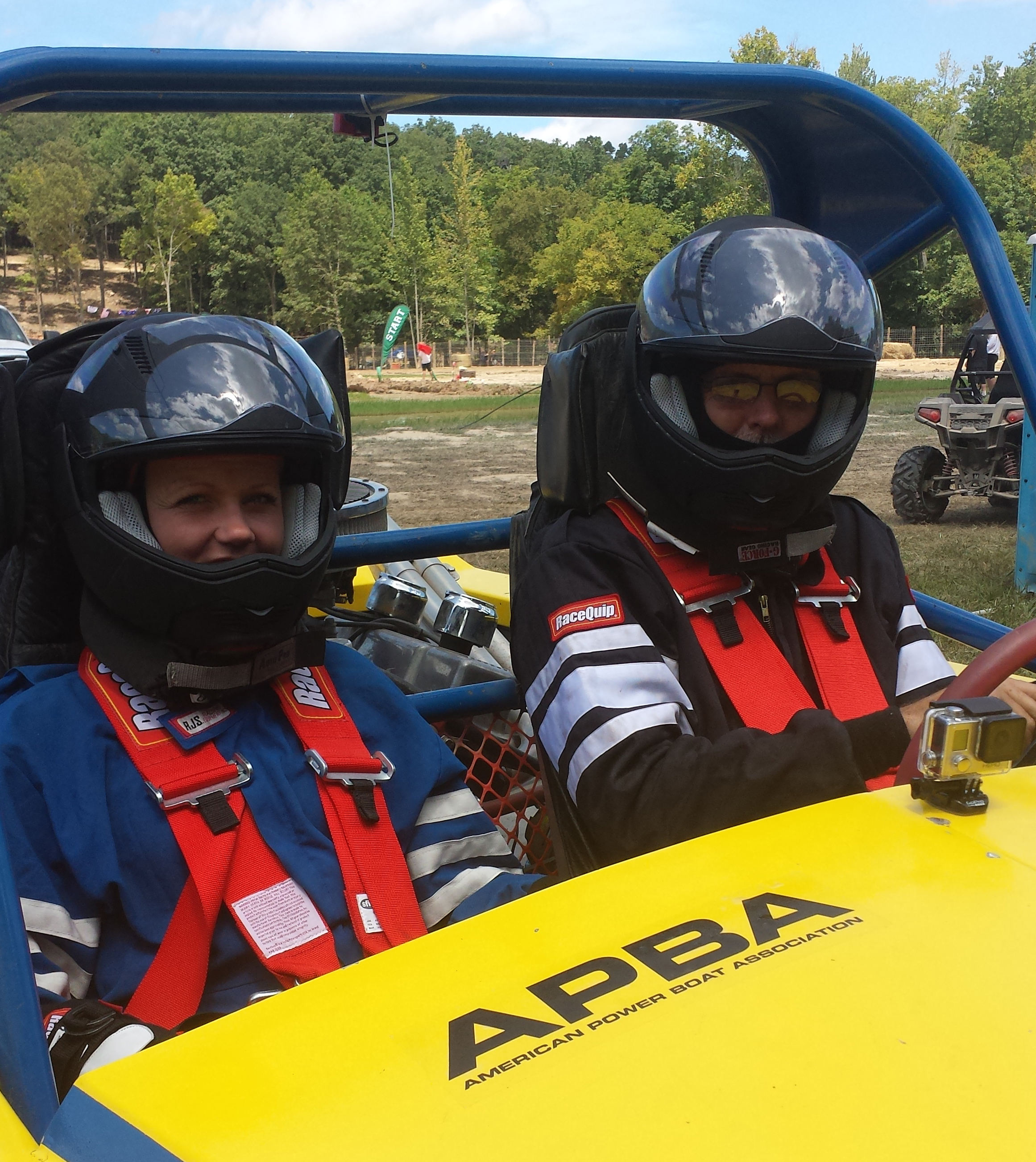Castillo Racing Team: In It For The Speed

It takes a special breed of person to run a jet sprint boat at speeds up to 100 mph in a narrow channel in depths of water less than two feet, with 22 directional changes.
“Yes,” there will be crashes,” says Peggy Castillo, the wife and former navigator of her husband and sprint boat driver Juan. “The only question is how bad will it be?”
Within minutes of her explanation of the sport, one of the boats didn’t make a sharp turn, hit a bank, and flipped, landing upside down in the water. Crew members rushed to the boat to get it upright, and to unstrap the driver and navigator. The driver appeared to possibly be hurt. An ambulance backed up to the water as close as it could get, and the crew brought the driver out strapped to a body board. Moments later he was walking, limping a bit, but intact.
Another boat missed that very same turn moments later and jetted over the bank and into a grove of trees.
Peggy pointed to a scar on her leg that she incurred as navigator of her husband’s boat a few years ago. Juan later pointed out that a video of that crash is still on youtube as one of the worst jet sprint boat crashes in the sport’s history.
“It didn’t break the leg,” explained Peggy. “But, yeah, it hurt.”
Asked how her husband got into the sport, she laughed. “I guess it’s because we don’t play golf.”
Juan was a helicopter pilot for 23 years, and a self-confessed adrenaline junky. “He loves the speed,” said Peggy. He’s been racing for 14 years now.
She recalls Juan was hooked the first time he saw a jet sprint boat race. It’s a relatively new sport in the United States. The Castillos are from Boise, Idaho, but most of the racers are from Australia, New Zealand and Canada.
Peggy says the Aussies and New Zealanders have a definite advantage in the races. “That is where the sport began,” she explained. It is also where many of the boats are built.
Peggy explained why every boat must have both a driver and a navigator.
“First, there is balance. And second is the fact that the human brain cannot process a track fast enough to drive 100 mph with those kinds of turns. Both the driver and the navigator have to know that track. They have to have it memorized, every turn. They have to know how they are going to navigate it before they get there,” she explained.
“These drivers are racing against each other, but they are also racing against the clock,” Peggy explained. Especially when they are in the final rounds of racing, they will push the envelope as much as they can.
They see a driver wipe out, and it doesn’t slow them down. It pushes them more,” said the driver’s wife.
Does that make her nervous? “No. I guess I’ve gotten used to it,” she explained. Though she says three things make her husband a safe driver.
“First, he doesn’t want to hurt himself. He definitely doesn’t want to hurt his navigator. And he doesn’t want to hurt his boat,” she explained.
Are these drivers in it for the money? No way, she says. The sport is still too new to have attracted many corporate sponsors, especially in the United States. The prizes aren’t money, just trophies.
And as you might imagine, these sprint boats are expensive, from $50,000 on up per boat. The Castillos, like the other racing teams, move on next to the final leg of the World Series to be held in Lebanon, Oregan in two weeks. So even travel is expensive.
“Right now, we are always looking for sponsorship,” she said. “And, jet sprint sports fans are the most loyal fans in the world”
Fans come from all over the world. She pointed out a man in a cowboy hat out in the pit area. “He’s from Texas, but he comes to every race,” she said. “That kind of loyalty is inspiring.”
“It definitely beats golf,” she laughed. “I guess we are just not people who are destined to slow down.”


